Covering more than 200 square metres, Rock 12 is the largest engraved rock of the Seradina area; it is included in the Seradina-Bedolina Archaeological Municipal Park. Its beautiful and richly engraved surface has been known since the first discovery of the greatest part of the Valcamonica rock art (1932). In the 1980s the rock was traced and studied under the direction of Mila Simões de Abreu, during which time the tracing was completed. Seradina 12 hosts some very rare iconographic items; among them, we can notice six Iron Age horse-driven ploughing scenes. Two of them are accompanied by sexual scenes, the action meaningfully performed while the ground is being hoed.
by M.Simões de ABREU and A.E. FOSSATI
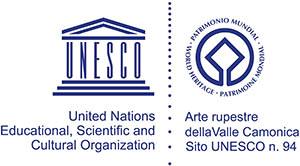
Seradina Rock 12, Valcamonica,
eighty-three years of research
[image click to enlarge]
Covering more than 200 square metres, Rock 12 is the largest engraved rock of the Seradina area and one of the most important of the entire Valcamonica Rock Art; it is included in the Seradina-Bedolina Archaeological Municipal Park. As for the Naquane National Park, the slope is situated inside the territory of the Capo di Ponte Municipality.
Seradina 12 shows duellists, riders, ploughing activities, deer, dogs, footprints, topographic patterns and granaries, to specify only the most important engraved figures on it. Their chronological extension spans from all the phases of the Iron Age to the beginning of the Roman times (8th BC, 1st AD). Duelling scenes are depicted with a stick-body style (8th-7th cent. BC, style 4th1 ), which is the most ancient of the Iron Age.
The beautiful and richly engraved surface of Seradina Rock 12 has been known since the first discovery of the greatest part of the Valcamonica rock art, which occurred at the beginning of the 1930s. Some of its figures, like ploughing activities, were already published by Raffaello Battaglia in 1932; the area was referred to as Dos de la Greppa at that time. The same author published in 1934 other two images taken from nearby rocks.
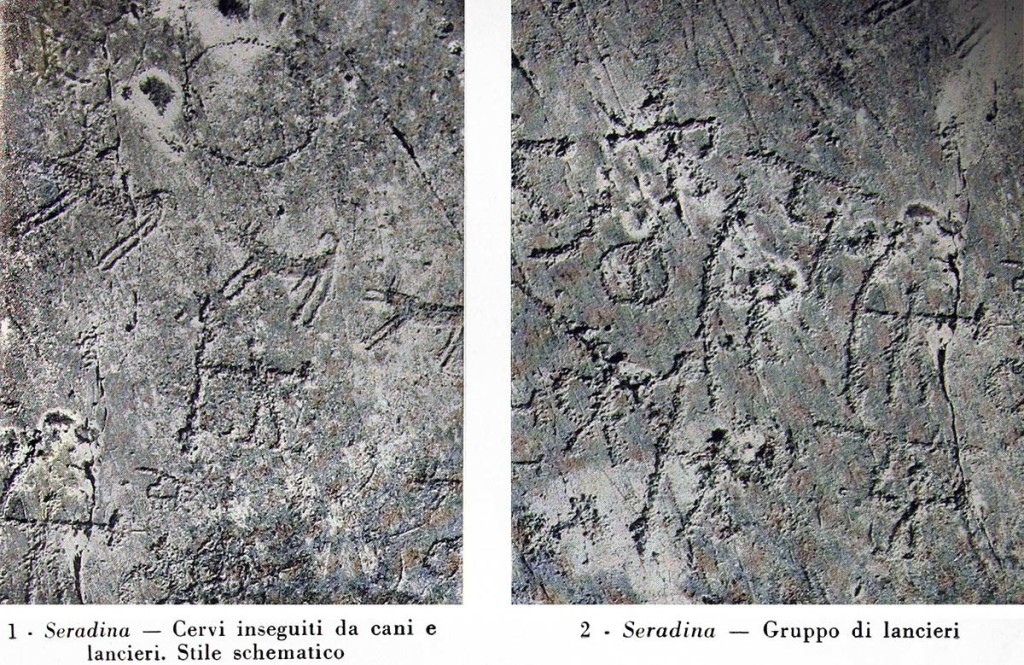
Seradina: a deer being chased by dogs and stick-body figures holding spears and little shields (from Battaglia 1934)
In the 1980s, the rock was newly recorded. Its area was enlarged, traced and studied under the direction of Mila Simões de Abreu, firstly with the Centro Camuno di Studi Preistorici (1981-1987) and then with the Footsteps of Man Archaeological Cooperative Society (1988-1989), during which time the tracing was completed. As you may notice when observing the photo gallery, in those years the so-called neutral method was still allowed: engraved rocks were painted white and figures were enhanced by rubbing them with a wrung cloth soaked in black.
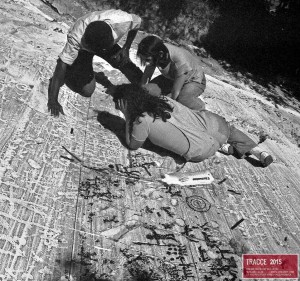
Seradina rock 12: Mila Simões de Abreu traces the engraved surface, figures enhanced by the so-called “neutral method” (photo L. Jaffe 1985)
Seradina 12 hosts some very rare iconographic items; among them, we can notice six Iron Age horse-driven ploughing scenes. Two of them are accompanied by sexual scenes, the action meaningfully performed while the ground is being hoed. Along with the one of Seradina Rock 8, they are unique in the entire Valcamonica rock art.
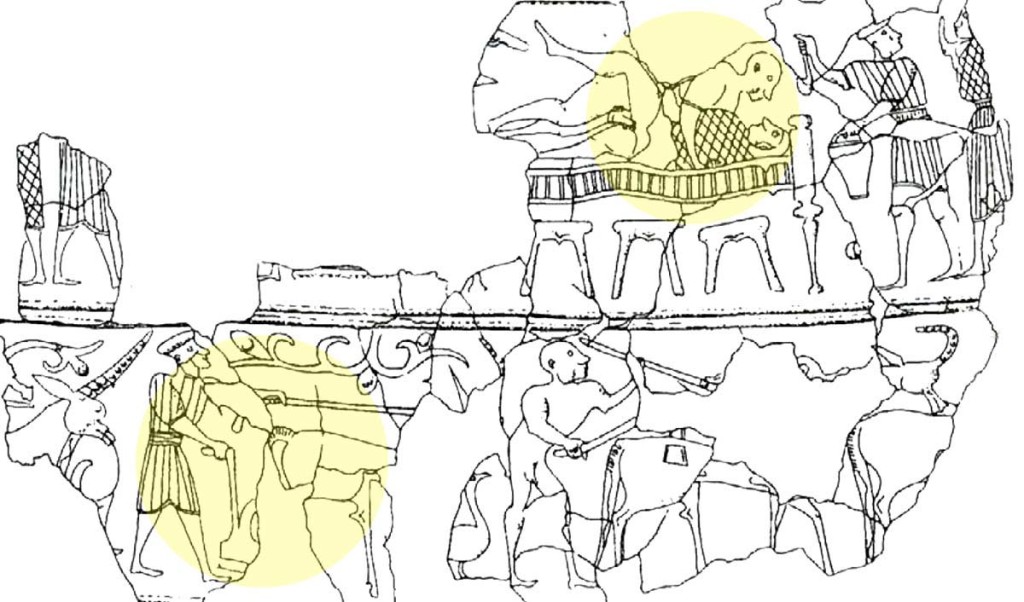
Ploughing and sexual scene embossed on the Sanzeno situla (Iron Age, 5th cent. BC; from Capuis and Ruta Serafini 1996)
As already outlined (Abreu 1989), the combination of a ploughing scene and sexual action suggests symbolic meanings and a ritual or ceremonial connection. We may find a similar combination on the Montebelluna and Sanzeno situlae (Iron Age, 5th cent. BC), although these are embossed on two different rows of the decorated bronze buckets.
Nearby, some deer figures have antlers with a shape that is very rare in other Valcamonica engraved surfaces (recurs on the rock 3 of Naquane): a sun-like silhouette. The author was probably imitating, during the Iron Age, a two millennia older Copper Age style like that of the nearby Cemmo 1 Boulder.
Last but not least, another beautiful and unique scene should be mentioned: two little duellists are flanked by two taller figures holding spears and shields. We may suppose that a training activity for teenagers is depicted here.
The complete study of the rock is now in the publication process: the book will be soon available for scholars and enthusiasts.
If you like these figures, please don’t hesitate – Valcamonica rock art is definitively worth a visit. The Seradina, Cemmo and Naquane Parks are waiting for you!
Although they are open all year round, we may suggest wintertime, when the engraved figures are dramatically highlighted by the natural oblique sunlight.
Mila Simões de ABREU
Universidade de Trás-os-Montes e Alto Douro (UTAD), Unidade de Arqueologia,
Departamento de Geologia; Centro de Estudos Transdisciplinares
para o Desenvolvimento (CETRAD)
msabreu at utad.pt
Angelo Eugenio FOSSATI
Università Cattolica del S. Cuore, Dipartimento di Storia, Archeologia e Storia dell’Arte
Largo Gemelli, 1 – 20123 MILANO (Italy)
angelo.fossati at unicatt.it – ae.fossati at libero.it
Photos are taken from the MS ABREU-JAFFE and Footsteps of Man archives (1985, 1994)
Seradina rock 12 – photogallery
(click to enlarge; 29 photos by MSABREU-JAFFE and Footsteps of Man archives)
Bibliography
Abreu Simões de M. 1984, Corno di Seradina roccia 12 1983, B.C. Notizie, notiziario del Centro Camuno di Studi Preistorici, a. I, n. 2, pp. 5-8.
Abreu Simões de M. 1989, Le scene d’accoppiamento sessuale nelle incisioni rupestri camune, Appunti, 8, giugno 1989.
Abreu Simões de M., Fossati A. 1987, Ricerche sull’arte rupestre di Paspardo e Capo di Ponte, B.C. Notizie, IV, 4, Edizioni del Centro Camuno di Studi Preistorici, Capo di Ponte, pp. 14-19.
Abreu Simões de M., Fossati A. 1988, Paspardo e Capo Di Ponte (Brescia). Ricerche e studi di arte rupestre, NSAL 1987, Notiziario della Soprintendenza Archeologica della Lombardia, 1987, Milano, pp. 45-48.
Battaglia R. 1934, Ricerche etnografiche sui petroglifi della cerchia alpina, Studi Etruschi, 8, pp. 11-48.
Battaglia R 1932, Incisioni rupestri di Valcamonica, Bullettino di Paletnologia Italiana, 52, pp. 69-74.
Capuis L., Ruta Serafini A. 1996, Nuovi documenti di arte delle situle nel Veneto, in Lippert A., Erzsébet J. (eds.), Die Osthallstattkultur, Akten des Internationalen Symposius Sopron, Budapest, pp. 37-48.
Fossati A. 2009, Il Parco Archeologico Comunale di Seradina-Bedolina, in Capo di Ponte, Guida turistica, Capo di Ponte, pp. 43-52.
Piombardi D. 1989, Le figure di aratro nelle incisioni rupestri della Valcamonica, Appunti, 8, giugno 1989.
Sansoni U. 1984a, Corno di Seradina 1983, B.C. Notizie, Notiziario del Centro Camuno di Studi Preistorici, a. I, n. 2, pp. 3-5.
Sansoni U. 1984b, Recenti risultati nella ricerca sull’arte rupestre della Valcamonica 1979-1983, Bulletin d’Études Prèhistoriques Alpines, XVI, pp. 63-82.
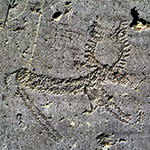
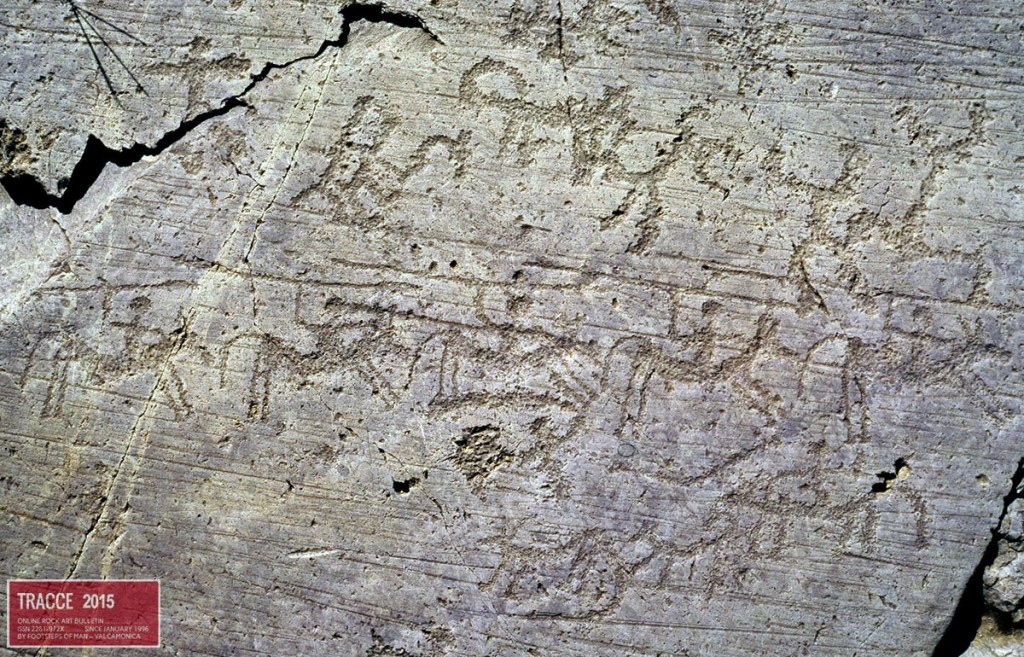
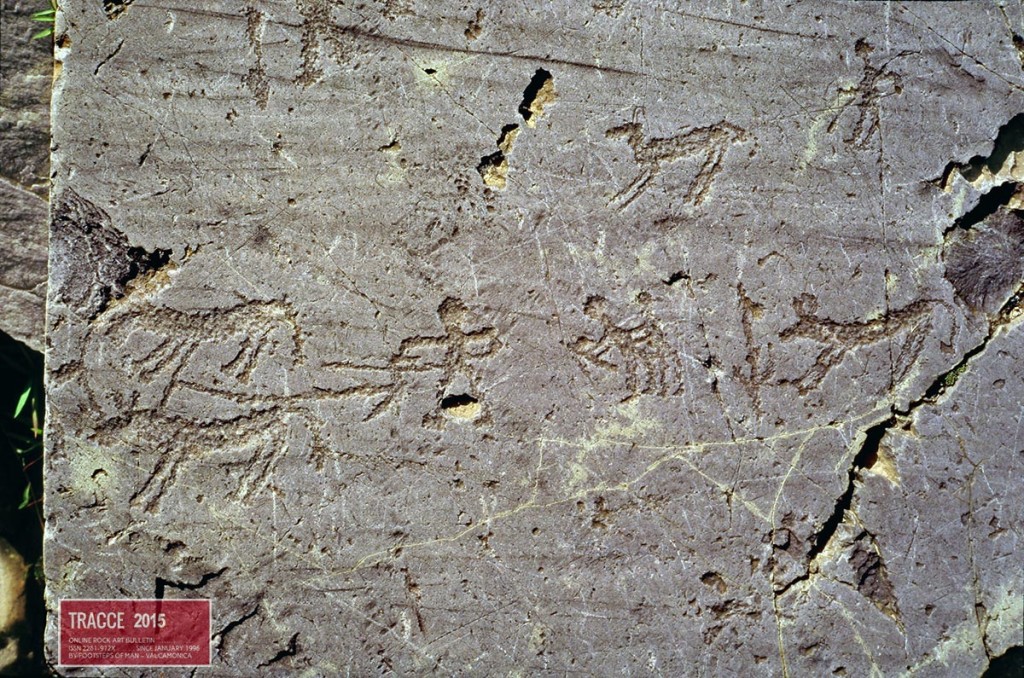
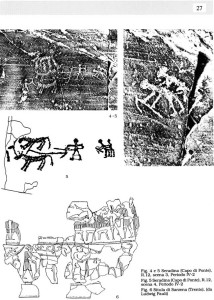
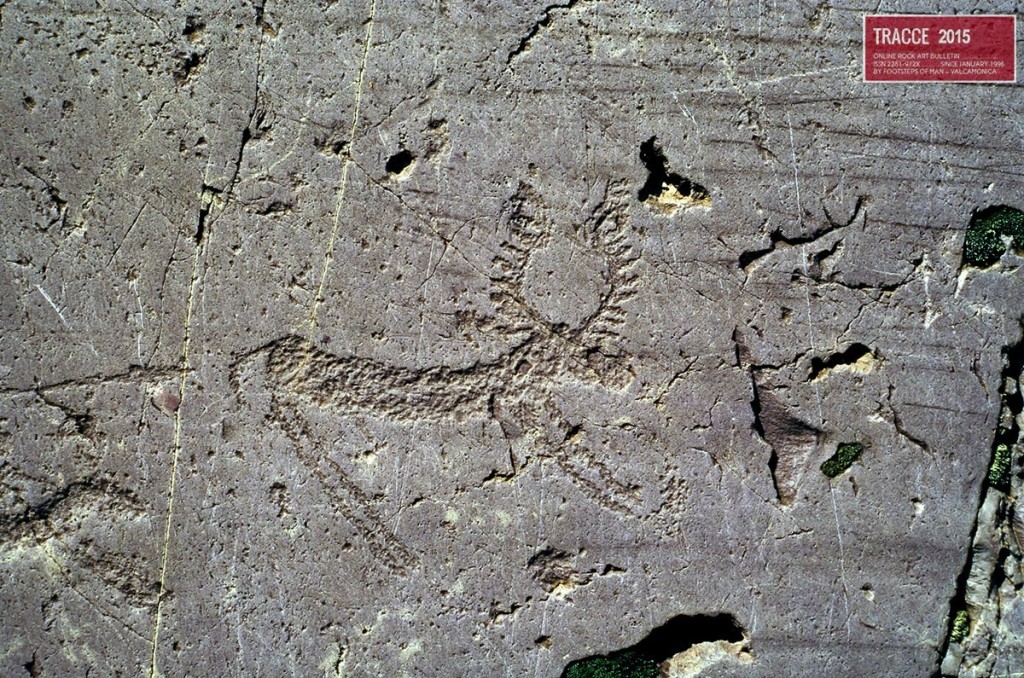
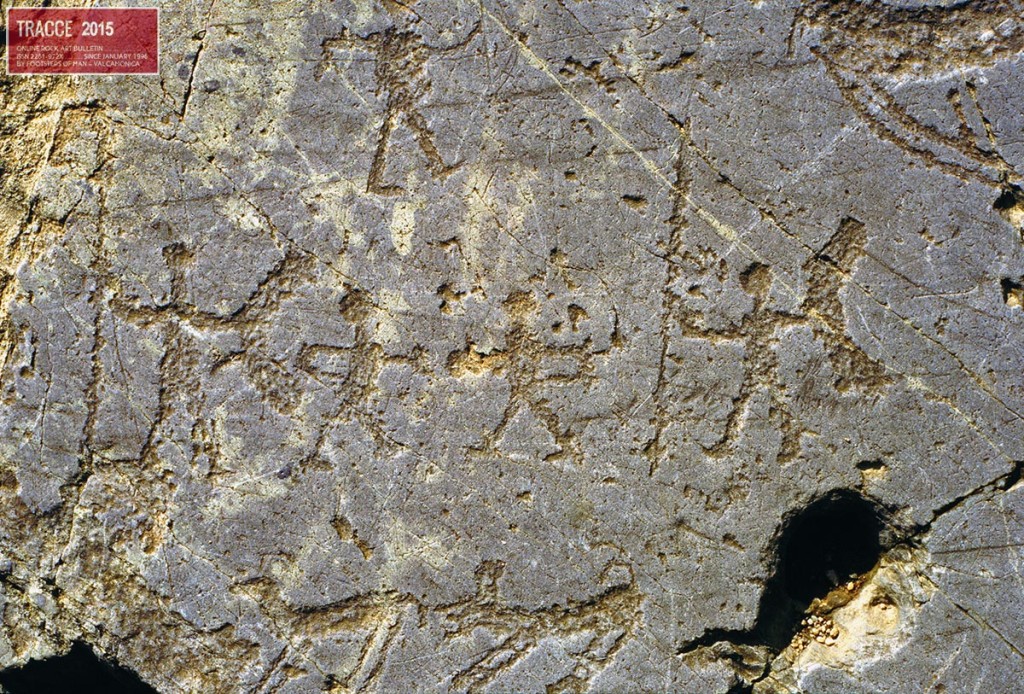


























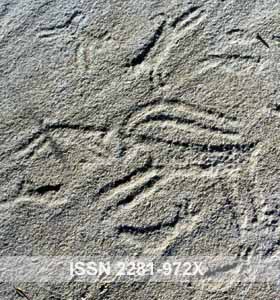













Leave a Reply